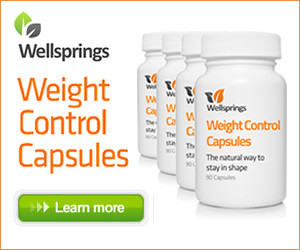Weight Loss and Heart Health with the DASH Diet
A healthy diet helps reduce weight, and reduce your risk for high blood pressure and associated conditions.

How does it help?
The DASH Diet can help lower your blood pressure and cholesterol levels, which is good for your heart.
DASH stands for Dietary Approaches to Stop Hypertension, or high blood pressure.
Even if you don’t have high blood pressure, the DASH Diet is worth a look. It may help you lose weight because it’s a healthier way of eating.
You won’t feel deprived. You’ll have lots of vegetables, fruit, and low-fat dairy products while cutting back on fats, cholesterol, and sweets.
Here are the key elements you need to consider when starting the DASh Diet.
Reduce salt
Too much salt causes fluids to build up in your body. This puts extra pressure on your heart.
On DASH you can cut back by choosing low or no-salt foods and condiments, reduce foods that are cured, smoked, or pickled and definitely limit processed foods as they’re often high in salt.
Grains are good
Eating whole grains like wholemeal bread, especially sourdough, brown rice, whole grain cereals, oatmeal, whole wheat pasta, and popcorn – but go easy on the salt, sugar and butter – are all good ways to get fibre.
Some fibre helps lower your cholesterol and also keeps you feeling full longer. For a diet of 2,000 calories per day eat six to eight servings a day.
One serving is a slice of bread, 1 ounce of dry cereal, or ½ cup of cooked whole wheat pasta, rice, or oatmeal.
Load up with vegetables
Vegetables give you fibre, vitamins and minerals. They don’t have a lot of calories or fat – a good recipe for controlling blood pressure.
Have four to five servings of vegetables a day. That’s 1/2 cup of cooked or raw vegetables, 1 cup of raw leafy vegetables, or 1/2 cup of vegetable juice for each serving.
Not a big vegetable eater? Start by adding a salad at lunch and dinner.
Don’t forget fruit
Fruit offer lots of fibre and vitamins that are good for your heart. Many also have potassium and magnesium, which help lower blood pressure.
Eat fruit several times a day and one serving is a medium apple or orange, or 1/2 cup of frozen, fresh, or canned fruit in natural juice – not syrup.
A small glass of fruit juice or a small amount of dried fruit also counts as a serving. Try adding bananas or berries to your breakfast cereal or plain yoghurt and have fruit for dessert.
Remember whole fruit is best, and have small portions of other as they can be high in sugar so watch the calories.
Dairy foods and yoghurt
Low and no-fat dairy foods are good sources of calcium and protein, which can help maintain a healthy blood pressure.
Try to get three servings of dairy every day and choose skim or semi skimmed milk and low fat cheeses and yoghurt.
One serving of yoghurt equals 1 cup of milk, or one and a half ounces of cheese – about the size of three dice.
Lean meat and fish
You can still eat meat but just make sure it’s lean. Meat is a good source of protein and magnesium.
Skinless chicken, eggs and fish are also on the menu and a good rule is to have no more than 3 ounces of meat at a meal and that’s about the size of a mobile phone.
Nuts and legumes
Nuts, legumes, and seeds are rich in magnesium, protein, and fibre. Walnuts are full of omega-3 fatty acids, which may help lower your risk of heart disease.
Enjoy as many as five servings of these foods each week. That’s 1/3 cup of nuts, 2 tablespoons of seeds, or a 1/2 cup of cooked dried beans or peas in each serving.
Grab a handful of seeds or nuts as a snack or add beans to your salads or soups, but again remember if trying to lose weight you may want to limit your nut intake. They do contained saturated fats and can increase your calorie intake.
Cut down on fats and oils
Eating too many fats can cause high cholesterol and heart disease. With DASH, you’ll limit fats and oils to two to three servings a day.
That’s includes butter, margarine, vegetable oil, 1 mayonnaise, and salad dressing.
When cooking, use vegetable oils like olive or canola instead of butter or use an olive oil spray to reduce the amount used.
Sweets and desserts
You don’t have to skip all sweets but choose sweets that are low in fat and if you are a chocolate fan go for the highest rating for the most health benefit, and that’s at least 70% cocoa solids.
Instead of high-fat desserts, try having fresh fruit or plain yoghurt.
Potassium
This essential mineral is another important part of the DASH diet. Getting enough of it may help lower your blood pressure.
It’s best to get potassium from food instead of supplements and aim for 4,700 milligrams (mg) a day. Try these potassium-rich foods:
Potato: 610 mg
Sweet potato: 542 mg
Banana: 422 mg
Avocado (1/2): 487 mg
Cooked spinach (1/2 cup): 419 mg
Getting started
DASH isn’t hard to follow, but you’ll have to make some changes. Start by keeping a food diary for a few days and see how your diet stacks up.
Then start making changes and aim for around 2,000 calories a day. It may vary depending on your body and how active you are. Ask your doctor for advice if not sure.
Helpful information:
At menopause women do have a higher risk for heart disease and strokes, and a healthy diet and good hormone balance will do a lot to reduce that risk.
Getting blood pressure checked regularly, and watching your diet, are both important tools in reducing menopause health risks.
https://anna.blog.wellsprings-health.com/10-ways-to-lower-your-blood-pressure-naturally/



















